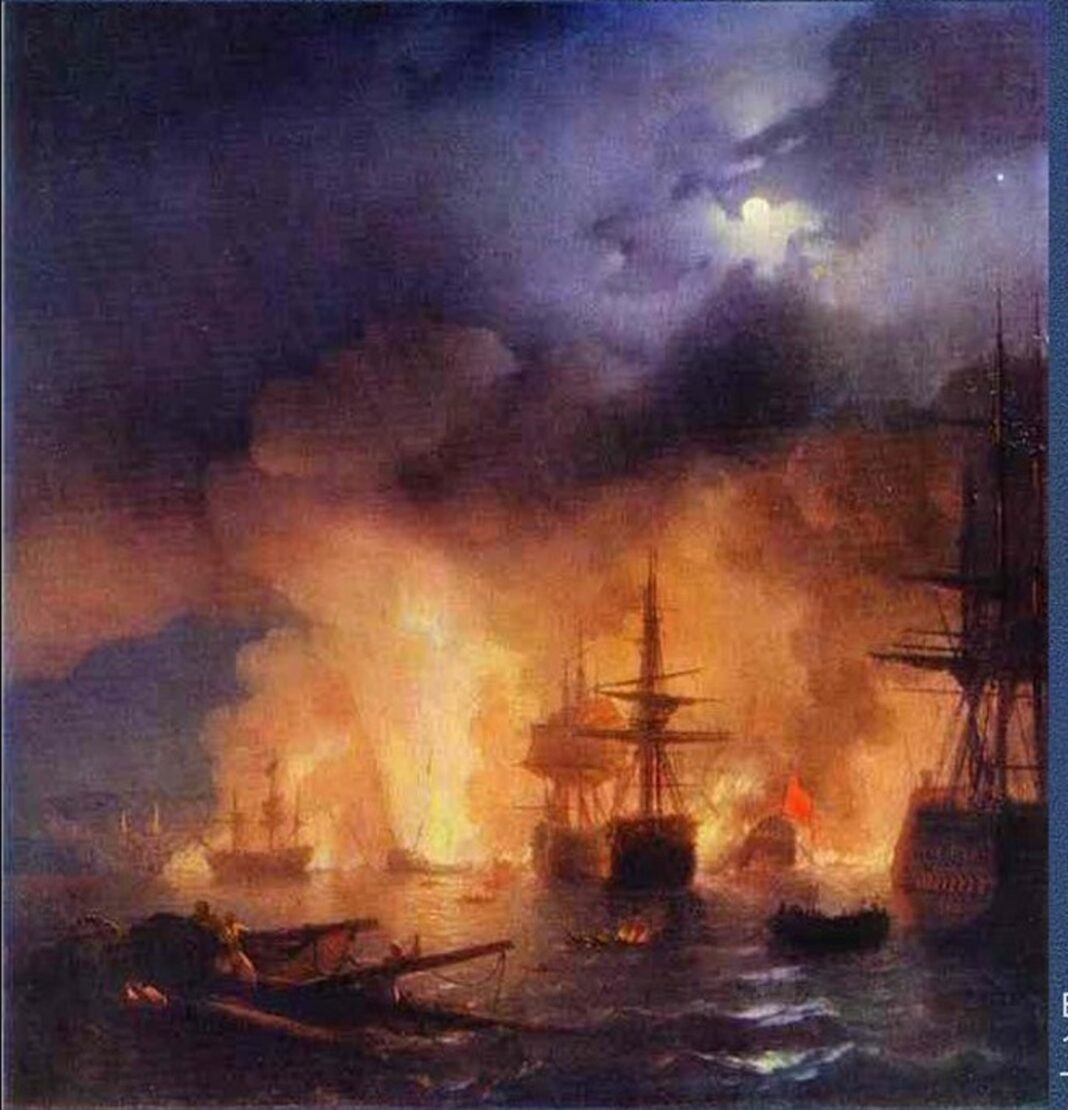“People without the knowledge of their past history, origin and culture is like a tree without roots”- Marcus Garvey
The Independence 1821 War of an enslaved people against the World Power of the Ottoman Empire was not spontaneous or an accident. The 1770 Battle of Chesma, Greek Orthodox Church, merchants of the Filiki Eteria, and Alexander Ypsilantis Revolt were forerunners of the successful 1821 war.
My grandmother, Despina Gagas Pappas adored Catherine the Great because she had a victorious battle off the coast of the Northeast Aegean island of Chios in the Bay of Chesma, her homeland. I watched the movie “The Rise of Catherine the Great” with Douglas Fairbanks Jr. several times just to hear Count Orlov say the word Chesma (Tseme}.
I had no idea of the importance of the Battle of Chesma until I went to St. Petersburg, Russia in October 2015. I was astonished to see the Chesma Church. It is a pink and white church, like a pink gingerbread house. Today it is known as Chesmenskaya, St. John the Forerunner’s Church (The Church of the Nativity of St. John the Baptist). Closed in 1919, it is open since 1977 as a branch of the Naval Museum “The Chesma Victory”.
Chesmenskaya, the St. John Forerunner’s Church, was dedicated during the Russo-Turkish wars of 1768-1774. The commander-in-chief was Count Orlov with Admiral Spiridov on June 24, 1770, on the Nativity of St. John the Forerunner, who started a battle off the coast of Chios. The Ottoman forces retreated to the Bay of Chesma. Russian forces with the help of fire ships set fire to the Ottoman fleet. The Ottomans lost over sixty ships and 10,000 men. Russian casualties were minor. Admiral Spiridov reported to St. Petersburg “Glory be to the Lord God and honor to the Russian fleet. We attacked the enemy’s naval fleet, broke it, burned it, turned it to ashes, sent it up high in the air and sunk it…and thus gained dominion over the Archipelago.”
This was the first Russian naval victory since the time of Peter the Great. A silver medal was issued to commemorate the Russian victory. The inscription states “WAS: Chesma, the year 1770, 24th day of June.” Catherine the Great commemorated the event by building around St. Petersburg. The sites included: the Chesma Obelisk in Gatchina: Chesma Hall in the Peterhoff Palace; Chesma Rostral column in the center of the Big Pond in Catherine’s Park of Tsarskoye Selo. Chesma Church was the main memorial built-in 1977, in the presence of Gustav III, King of Sweden. On June 24, 1780, on the 10th Anniversary of Russia’s victory in Chesma, the temple was sanctified in the presence of Joseph, emperor of Rome. Since that day, the newly built church, palace, and neighborhood became known as CHESMA.1
Why is the Battle of Chesma important to Greece and the Balkans? It was a forerunner of the later Greek War of Independence (1821-1829) and the first of several disastrous fleet battles for the Ottomans against Russia. The defeat of the Ottoman fleet speeded up rebellions by Orthodox Christian nations in the Balkan Peninsula, who helped the Russian army in defeating the Ottoman Empire.2 Russia’s Battle of Chesma is known only to Greek and Russian scholars and not in mainstream Western history. In Chios, books written in Greek about the lost Hellenic centers of Western Anatolia describe the Battle of Chesma in detail.
“You will see artwork you will remember,” said our Moscow guide Irina Chetina during our 2015 visit of the Tretyakov Gallery. The Tretyakov gallery visit, through the eyes of our guide Irina, opened my eyes to the fact that Greek Independence images were painted not just by an Armenian-Russian painter. “He is considered one of the greatest
marine artists in history.
Baptized as Hovhannes Aivazian, Ivan Aivazovsky was born into an
Armenian family in the
Black Sea port of
Feodosia in
Crimea and was mostly based there.”
3He painted the “Battle of Chios”, also known as “The Battle of Chesma”, 1770. This battle has been handed to each generation as a moment for possible Greek freedom in Western Asia Minor.3 I have seen Ivan Aivazovsky’s name under a painting called “The Battle of Navarino”, shown in Greek textbooks, newspapers, and websites. Ivan Aivazovsky’s childhood was spent in poverty on the outskirts of the city facing the beautiful Feodosia Bay and the ruins of an ancient Greek fortress. Young Ivan was mesmerized by the grandeur of the view and the heroic stories told about the Greeks and the famous battles of the past.4
This writer presented a PowerPoint presentation that included scenes of the Battle of Chesma and Navarino of the 1821 Revolution entitled, “Ivan Aivazovsky: Remembering Armenia and the Eastern Roman Byzantine Heritage,” on April 25, 2018, to a filled church auditorium of the Women’s Guild of the Armenian Church of the Holy Martyrs in Bayside. Father Abraham Malhasyan, co-Chairs Zarmi Megherian and Carol Loshigian, and program coordinator Carol Anastasian assisted by scholar Mardo Anastasian created this program of Philhellenism. This continuation of the forces in motion that led to the 1821 Revolution, forged in blood and economic ruin of the Eastern Orthodox persons, who wanted out of the bonds of slavery, will continue in my writings.
References:
1. St. John the Forerunner’s Church (Chesmenskaya tserkov), (Moskovsky branch of “Sankt-Peterburg” bank, St. Petersburg).
- https://www.britannica.com/event/Battle-of-Cesme; https://en.wikipedia.org/wiki/Battle_of_Chesma







